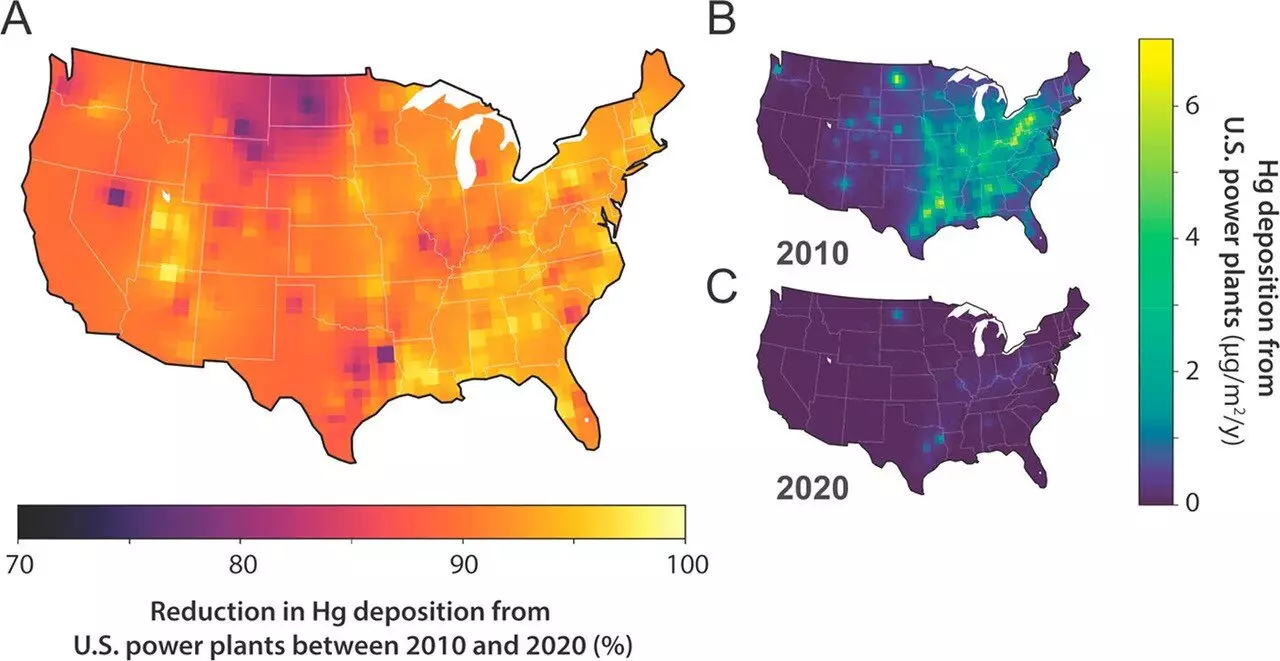The US Environmental Protection Agency’s (EPA) regulations aimed at reducing the harmful effects of hazardous air pollutant (HAP) emissions from fossil fuel-fired power plants, known as the Mercury and Air Toxics Standards (MATS), have been a significant success story. A study conducted by Harvard John A. Paulson School of Engineering and Applied Sciences (SEAS) reveals that in the decade after the standard was introduced, the amount of mercury released into the atmosphere from US power plants decreased by 90%. The regulation forced all power plant operators to meet top-tier emissions control performance standards across the country, resulting in many operators opting to shut down coal-fired electricity generating units or switch to natural gas, a fuel source that produces negligible mercury emissions. Out of the 507 coal-fired power plants that were operating in 2010, 230 were fully retired, and 62 were partially retired by 2020. Coal-fired power plants were formerly the largest domestic source of dangerous mercury emissions, accounting for 50% of all primary US mercury emissions sources in 2005.
The MATS regulation was a success story linked to the Clean Air Act Amendments of 1990, eliminating most of the last remaining US mercury emissions point sources and providing benefits for millions of freshwater and recreational anglers across the country. The reduction in mercury emissions is significant as mercury is a potent neurotoxicant, and exposure to it has been linked to fatal heart attacks in adults.
Challenges and Proposed Changes
Despite the historic national progress, two regions stand out as stubborn continuing sources of mercury emissions: Texas and North Dakota. Both states are home to power plants that burn locally mined lignite coal, which is a lower-quality and less dense energy source than the bituminous coal that fuels plants in most other parts of the country. This means that lignite burning control standards for mercury in 2012 were less stringent than those developed for most US power plants.
The Harvard team also investigated whether the sociodemographic characteristics of people living near power plants that continued to operate in 2020 differed from those living near facilities that had retired since 2010. They found that those who continue to be exposed to dangerous mercury levels from power plant emissions tend to be poor, less educated, and from limited-English households. This highlights the lack of distributional justice in the siting of US pollution sources and exposures, with effects on the health of the most vulnerable individuals and communities.
To address the challenges, the EPA has proposed changes to MATS that would compel operators of lignite coal-burning power plants to adopt technologies that would significantly reduce their toxic emissions. These proposed more stringent standards are open for public comment until June 23, 2023. According to Elsie Sunderland, Fred Kavli Professor of Environmental Chemistry and Professor of Earth and Planetary Sciences at SEAS, “Our recent work suggests that strengthening the MATS rule, as proposed by the Biden Administration, would eliminate the last two remaining mercury deposition hotspots in the United States attributable to coal-fired power plants. This is an important change that will benefit vulnerable communities and indigenous groups.”
The MATS regulation is a success story in reducing mercury emissions from US power plants, but challenges remain in areas where lignite coal-burning power plants continue to operate. The proposed changes to MATS aim to eliminate the last remaining mercury deposition hotspots in the US, benefiting vulnerable communities and indigenous groups. The study highlights the need for distributional justice in the siting of pollution sources and exposures, with the most vulnerable individuals and communities being disproportionately affected.



Leave a Reply